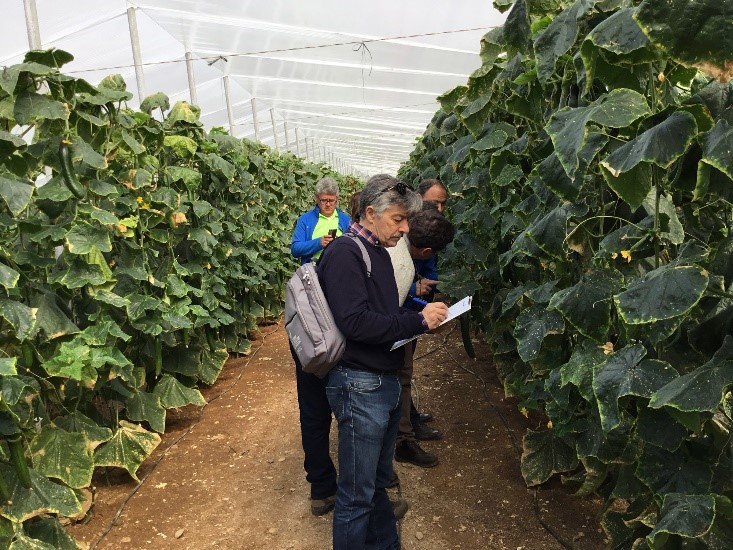Syngenta’s Scientists Adjust to Changing Practices
 The time and cost to discover an active ingredient, develop a suitable formulation, and deliver a new crop protection product to market have increased significantly in the past decade. Estimates put the figures at over 11 years and more than $250 million.
The time and cost to discover an active ingredient, develop a suitable formulation, and deliver a new crop protection product to market have increased significantly in the past decade. Estimates put the figures at over 11 years and more than $250 million.
It is little wonder, then, companies like Syngenta parallel those efforts with the reformulation of existing products.
There are a number of reasons companies decide to reformulate existing products: improving efficacy, supporting resistance management strategies, securing intellectual property, regulatory concerns, and adapting to growers’ changing practices, just to name a few.
Whatever the reason, reformulating existing technology helps extend the life of an AI, which helps companies recoup that investment of time and money.
“The path to take a molecule from discovery to the marketplace is long and expensive,” says Matthew Cottle, Ph.D., Group Leader, Herbicide Formulation Development, Syngenta. “Formulation Development gets involved early to identify any blockers to delivering a quality product.”
Cottle and his team help develop formulations for both new molecules in the development pipeline and reformulations of existing technologies.
“There are variables that must be considered before molecules can be identified as the next herbicide or fungicide,” he says. “Once it’s gotten to that point, we’ve spent a lot of money and time on the R&D side looking at its profile.”

Dr. Matthew Cottle, Group Leader, Herbicide Formulation Development, Syngenta
Fail Fast, Fail Cheap
That said, the formulation development team likes to “build formulation information in the R&D process as early as we can,” Cottle says. “We figure out what formulation types are appropriate for a given molecule. Is it soluble in solvents; does it need to be a dry formulation; does it have any issues with stability in water? By the time we are developing a product in earnest, we have some basic information on it.
That lets us turn around products in a timely fashion.”
That approach has another affect.
“We tend to become involved at earlier stages in an active ingredient’s lifecycle than was customary years ago,” says Andrew Pearson, Syngenta, Formulation and Analytical Development Manager for North America. “If you’re going to fail, you want to fail fast, and fail cheap. The earlier you know something is not going to work, the sooner you can stop evaluations before expensive studies are started.”
A molecule is no longer tested one step at a time waiting to see if it passes before moving to the next phase of development.
“The more you can do these activities in parallel, you can start to try to chip away at the 11 years and save time and money,” Pearson says. “You take a little more risk by investing formulation resources earlier on in the research.”
In addition to where a molecule is in the pipeline, the number of products in that pipeline has an influence on the formulation group, says Pearson.
“Five years ago, we were more focused on extending the existing AI portfolio,” he says. Earlier this year, Syngenta announced it would deliver 16 new products to the market.
“We have adapted our formulation resources to support the current R&D pipeline,” Pearson says.
Reformulations
Products are rigorously tested in a variety of conditions, but even with that, products can find their way back to the formulation group.
“We always do our best to have no issues when we go out to the market, but changes in use practices or unforeseen circumstances might require us to pull back and make some changes that hopefully provide some benefit to the customer,” Cottle says.
The amount of work done on a product’s reformulation really depends on why it’s being reformulated in the first place. It can also affect the review a product receives when it goes through the reregistration process.
“We have reformulation projects that involve only minor adjustments to the composition: for example, the optimization of a suspension aid,” Cottle says. “These types of alternate formulations can often progress more quickly through regulatory approval at EPA.”
Premixes provide a variety of benefits both for the customer and the company. Premixes simplify the technology for the grower, Pearson says. “There is less tank-mixing growers need to do on site when they’re applying premixed products.”
Another advantage to premixes, Pearson says, is the boost they offer to resistance management strategies.

Andrew Pearson, Syngenta, Formulation and Analytical Development Manager for North America
Regulatory Foresight
The responsibilities in the formulation technology group aren’t only about the science.“Regulatory foresight is a huge challenge,” Pearson says.
The company does its best to predict what the regulatory environment will look like in the coming years and the impact that will have on its formulations. The company keeps close tabs on the rules and regulations developed by governments around the world.
“If we see certain chemistries with a high risk of future regulatory pressure, we might make the decision to proactively reformulate products containing that AI,” Pearson says.
Syngenta’s scientists are always looking to move toward safer chemistry.
“We constantly talk about how we can have better regulatory foresight,” Pearson says. “We review EPA documents and look at literature and papers from other countries. We try to keep up with that on a global basis, and the decisions on whether to use specific chemistries or not is quite a challenge.”
Contact Dan: [email protected]






